Matador Network's Blog, page 594
September 8, 2021
These are the top 37 cities in the world for 2021
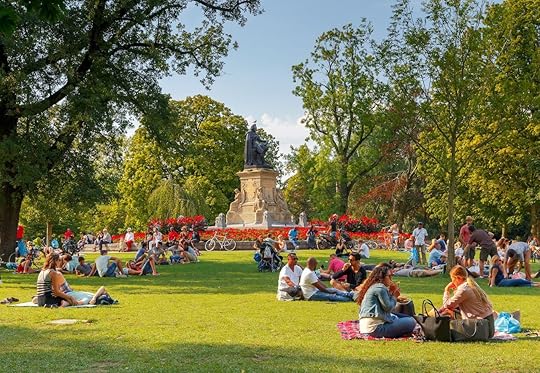
In the past couple of years, many have decided to pack up their belongings and move. But deciding on a new place to live in is not as easy and throwing a dart at a map and hoping it’ll all work out.
To make sure you choose your next home very carefully, Time Out has ranked the best cities in the world in 2021. To create this ranking, the publication surveyed 27,000 city-dwellers from around the world and asked them what living in their cities was like this year. Topics covered in the survey included food, culture, community projects, green space, and sustainability.
After compiling the results, Time Out ranked the best 37 cities in the world. Here are the top three:
San Francisco
Photo: Luciano Mortula – LGM/Shutterstock
Time Out explains that San Francisco got the top stop for the strong community spirits that emerged in the city during the pandemic. While the COVID-19 restrictions have been strict in SF, people stepped up to help their neighbors in needs in many ways, like the SF New Deal initiative which helped small businesses stay afloat during those tough times.
Amsterdam
Photo: Kavalenkau/Shutterstock
Amsterdam came in second place for its green spaces and efforts when it comes to sustainability. The city is home to Vondelpark the largest city park in Amsterdam and the most popular. According to the Amsterdam tourism board, Vondelpark is also “home to a selection of restaurants and cafés, including the Blauwe Theehuis, Café Vertigo, Vondelpark3, De Vondeltuin and the Groot Melkhuis. You’ll also find a skate rental shop, an open-air theatre and a rose garden with more than 70 types of roses in the park.” The fact that Amsterdam is has one the best museums in the world, Rijksmuseum, is another huge asset.
Manchester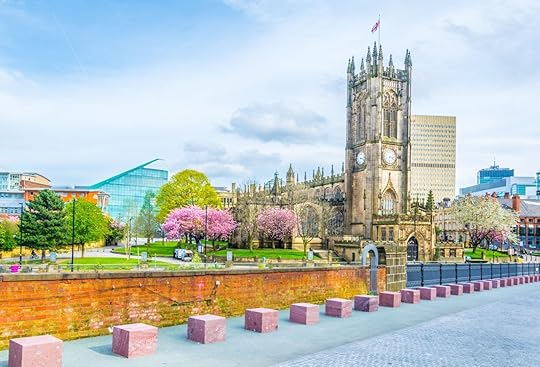
Photo: trabantos/Shutterstock
Time Out ranked Manchester as third best city in the world in 2021 for its cultural events and creative vibe, as well as the all-around good-spirited people. The city was voted number one for the following category: ‘nightlife’, ‘creativity’, ‘community spirit’, ‘friendliness’, and ‘getting to know your neighbors’.
Here are Time Out’s ranking for the 37 best cities in the world:
San Francisco, California Amsterdam, NetherlandsManchester, United KingdomCopenhagen, DenmarkNew York, New YorkMontreal, Canada Prague, Czech RepublicTel Aviv, IsraelPorto, PortugalTokyo, JapanLos Angeles, CaliforniaChicago, MichiganLondon, United KingdomBarcelona, SpainMelbourne, AustraliaSydney, AustraliaShanghai, ChinaMadrid, SpainMexico City, MexicoHong KongLisbon, PortugalBoston, MassachusettsMilan, ItalySingaporeMiami, FloridaDubai, UAEBeijing, ChinaParis, FranceBudapest, HungaryAbu Dhabi, UAESão Paulo, BrazilJohannesburg, South AfricaRome, ItalyMoscow, RussiaBuenos Aires, ArgentinaIstanbul, TurkeyBangkok, ThailandTo learn more about the ranking, visit Time Out‘s website 
The post These are the top 37 cities in the world for 2021 appeared first on Matador Network.
NEOM is planned to be the world’s first “sustainable” city. Here’s what we know.

For followers of tech blogs, sustainable design, and futuristic thinking, the term “NEOM” and “The Line” are by now familiar. Outside those circles, NEOM is not yet a household name. The term signifies a new, futuristic plan for a city, built to the highest standards of sustainability and convenience. It’s forward-thinking, controversial, and in the broad history of cities, is far beyond the scope of anything that has been done before.
NEOM, an acronym for “new future,” is garnering increased publicity due to its concept as the ultimate “smart city.” But if you’re like most of us, even if you’ve heard the term, you may not fully grasp what NEOM is all about. Let’s cover the basics of what NEOM is, where NEOM is, and when NEOM will be complete.
What is NEOM?The overview explanation is this: NEOM is a futuristic city planned to be developed in Saudi Arabia’s Tabuk Province near the Red Sea. The Crown Prince of Saudi Arabia wants to build this new city in the desert, as a sort of futuristic utopia that encompasses the best aspects of modern city living — convenience, sustainability, and community — while leaving behind the bad (traffic, pollution, waste, and vulnerable water supplies).
This city will be in the shape of a long, thin line. Easily accessible within the city will be all amenities and care necessary for citizens. Also easily accessible will be the outdoors. The grand vision of NEOM is to create an urban oasis where humanity and nature live harmoniously and in synchronicity, rather than an ever-expanding suburban metropolis that continually encroaches upon the natural world around it.
NEOM is also intended to be a “smart city,” meaning that technology and data will be used in real time to optimize everything about the city’s functionality and the lives of those who live within it. This includes basic things as traffic monitoring and efficient urban design to more advanced metrics like using live data to pinpoint potentially hazardous situations and rectifying them before something bad happens (think preventing a crash between two autonomous vehicles, or pre-patching a water pipe that is about to burst).
If there is one word to describe the line of thought behind NEOM it is efficiency.. The city is to be designed so that natural spaces will never be more than a five-minute walk away, and the city is to be built within a four-hour flight of 40 percent of the globe. Peak technology and connectivity will be built into every aspect of the city, from residential and commercial spaces to play and workspaces. Despite its proposed location in the Saudi desert, it is to be built in a place that is 10 degrees cooler than much of the Gulf region. And, NEOM will be powered by 100 percent renewable energy.
“The Line,” as NEOM is often called, will encompass 10,200 square feet of the Saudi Arabian desert. Of course, building a new metropolis in the desert is far from sustainable — at least when compared to not building anything. The idea here is to bring forth a new concept of what a city can be, and of how sustainable human living can be developed and furthered, and let it serve as a model for a sort of “new beginning” of urban development.
Is NEOM actually going to happen?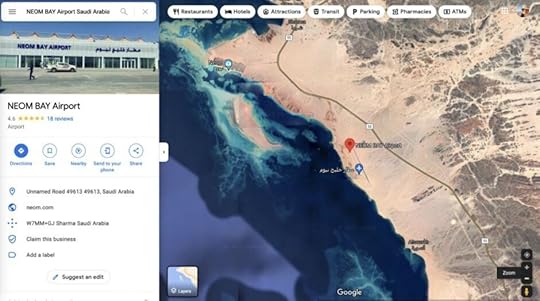
We’re not sure yet. It’s planned and ideas are in place. Many forward-thinking minds — including some that have ample political and financial influence — are at least interested in learning more, if not outright on board with the idea. These include Saudi Crown Prince Muhammed Bin Salman, who though a controversial figure has been the curator and mind behind the project.
NEOM is to be funded by the Public Investment Fund of Saudi Arabia as well as private investors around the world who believe in its concept and ideas, and can look past the controversy surrounding its founder. The first phase of the project is expected to be completed by 2025.
A four-airport network is planned for the city, one of which is currently in service. This is the Neom Bay Airport, a domestic airport that does service commercial flights. Here you can see where NEOM and its current small airport are located:
Is NEOM actually sustainable?The concept of NEOM and its line design is to build the world’s first city that has zero environmental impact. This, of course, is impossible, as any development anywhere has at least some environmental impact. NEOM does have the potential to showcase the most progressive technologies and concepts surrounding passive building design — buildings that generate the energy they use, and take nothing from “the grid.” It could also prove to be a model for preserving a city’s natural surroundings due to its line design.
Then there’s the issue of water. NEOM is to be built in the desert of northwest Saudi Arabia. According to its website, NEOM plans to generate its own water using state-of-the-art desalination techniques that make saltwater fit for human consumption. The city’s designers intend to store water above ground, and through ongoing desalination and proper management, avoid the pitfalls of water shortages that have plagued major cities in places like the American West as they face increasing drought due to climate change. Whether or not NEOM’s plan will work is yet to be seen.
NEOM’s design includes plans for food cultivation as part of its mission to be a self-sustaining city. Food will, according to the website’s outline of how residents and visitors will be fed, be diverse and healthy, grown organically and without pesticides, using high-tech greenhouses, aquaculture facilities, and a self-labeled “food park,” all of which add up to what the website claims is enough food production for a booming metropolis. Combined with renewable energy and passive building design, and a minimal amount of waste production, NEOM hopes to be a model for how the cities of the future can be designed and built sustainably. Watching the city’s development is sure to be an interesting ride. 
The post NEOM is planned to be the world’s first “sustainable” city. Here’s what we know. appeared first on Matador Network.
5 celebrity vineyards and wineries you can actually visit across the country

There are celebrity wines out there that are celebrity in name only. And then there are celebrity wines that go a little further with vineyards and tasting rooms that you can visit to see and taste for yourself.
From California wine country to Arizona and Virginia, there are wineries owned by the stars across the country. Some, like the wineries owned by Francis Ford Coppola, are almost as famous for the wine as for who owns it. Others are quietly putting out tasty bottles without splashing a big name on the bottle. All of the below are an interesting visit whether you know the celebrity or not.
1. Tamera Mowry-Housley: Housley in Napa, California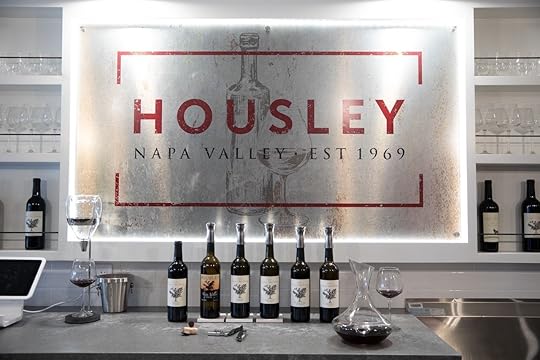
Photo: Housley/Facebook
Tamera Mowry-Housley, of Sister, Sister fame, owns the Napa winery Housley with her husband Adam Housley. The winery has been in the Housley family for nearly half a century, and Adam was raised in the Bay Area. After a stint in Major League Baseball and then a 20-year career as a TV journalist, he returned to run the winery along with Tamera. Housley winery makes a rosé, chardonnay, pinot grigio, cabernet sauvignon, zinfandel, and petit sirah.
The downtown Napa tasting room is open every day from 11 AM to 7 PM. It takes walk-ins and serves food, as well a wine and chocolate pairing chosen by Tamera.
Where: 1038 Clinton Street, Napa CA 94559
2. Francis Ford Coppola in Geyserville, California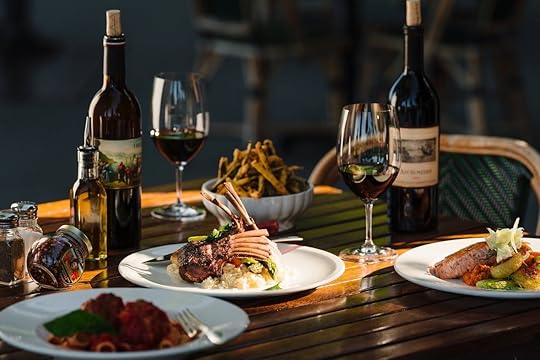
Photo: Coppola Wine/Facebook
Francis Ford Coppola and his family have made almost as big a name for themselves in the wine world as they have in cinema. Coppola bought Inglenook Estate in Napa in 1975, and then opened his eponymous winery in nearby Geyserville in 2006. Visiting is like a trip into a wine-soaked movie museum on a vineyard. Memorabilia from Coppola’s movies like The Godfather and Apocalypse, along with some Academy Awards, are just as accessible as the award-winning wines. And there are a lot of wines to choose from — the winery produces more than 40. A restaurant with a menu curated to pair with the house wines dishes options like pizza, spaghetti, and rack of lamb. Finally, there are the swimming pools. Two of them, to be exact, with all the chaise lounge chairs and vineyard views you could ask for.
If that’s not enough of a Coppola wine experience for you, he owns a second winery and tasting room people can visit, too, which makes Virginia Dare.
Where: Francis Ford Coppola Winery is located at 300 Via Archimedes, Geyserville, CA 95441; and Virginia Dare at 22281 Chianti Rd Geyserville, CA 95441
3. Robert Kamen: Kamen Estate Wines in Sonoma, California
Photo: Kamen Estate Wines/Facebook
Robert Kamen is best known for his work as a screenwriter and producer of films like Karate Kid, Fifth Element, and the Taken movies. He bought land in Sonoma County in the 1980s and started Kamen Estate Wines, which now has both a downtown Sonoma tasting room and the mountain vineyard itself that you can visit on a vineyard tour and tasting. For the latter, choose the two hour, $80 Sky Deck experience with a wine and cheese pairing (just note you need to book in advance). The tasting room is a more casual experience and is open daily with tastings by the flight.
Where: winery is located at 21692 8th Street East Suite 300 Sonoma, California 95476; and the tasting room is at 111B E Napa St, Sonoma, CA 95476
4. Maynard James Keenan: Caduceus in Jerome, Arizona
Photo: Caduceus/Facebook
Maynard James Keenan, of the band Tool, is serious about wine and supporting all things local through his winery Caduceus and his various restaurants and businesses in Jerome, Arizona. The former copper mining town is between Prescott and Flagstaff and was founded in 1876. People came to find their riches in boom times, but it hasn’t had a population above 500 people for decades. It does, however, have Keenan’s well-reviewed wines, restaurants, and businesses (seven vineyard sites and tasting rooms, two restaurants, a barber shop, and a record store, according to a recent Esquire profile). One of those locations, Merkin Vineyards Osteria, celebrates its home state with a near 100-percent Arizona focus on ingredients in addition to a long Caduceus wine list.
If you’re curious about how the frontman of Tool got so involved in making wine in a tiny, historic Southwest town, the documentary Blood into Wine is an informative watch before any visit.
Where: 158 Main St, Jerome, AZ 86331
5. Dave Matthews: Blenheim Vineyards in Charlottesville, Virginia
Photo: Blenheim Vineyards/Facebook
Virginia is an important stop on any countrywide wine road trip, and Blenheim Vineyards is where to start in the state. The Dave Matthews-owned winery is run by winemaker and general manager Kirsty Harmon, who has experience making wine around the world and is open to experimenting in America’s oldest wine region. Visit for the wines made from Virginia grapes, stay for the beautiful (and sustainable) winery building. Blenheim Vineyards is about 20 minutes outside of Charlottesville proper, and the vineyard grows chardonnay, viognier, cabernet franc, petit verdot, and cabernet sauvignon.
Where: 31 Blenheim Farm, Charlottesville, VA 22902 
The post 5 celebrity vineyards and wineries you can actually visit across the country appeared first on Matador Network.
The most strenuous hikes in America’s flattest states
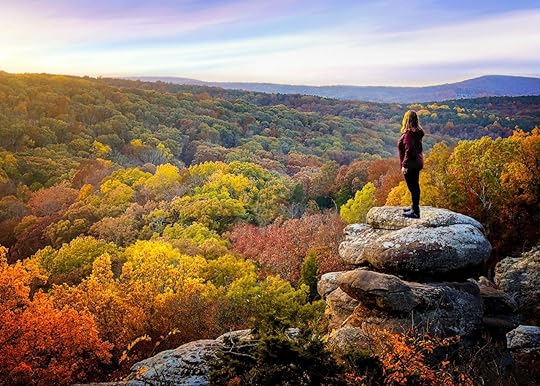
Elevation and distance are the most obvious metrics for determining the difficulty of a hike. But they’re not the only ones. Factors like terrain, trail maintenance, technical demands, and weather conditions all impact how strenuous a hike may be, regardless of its incline.
This comes as a surprise even to Appalachian Trail trekkers. “A lot of people find the Pennsylvania section to be really challenging, not because of the overall elevation gain but because it’s so rocky,” says Wesley Trimble, communications and creative director of the American Hiking Society. “So even with a thru-hiker who’s gone through the Smokies and done some of the biggest climbs on the trail, when they get to Pennsylvania, a lot of times they find they can’t hike as long or as far as in some of the earlier states.”
Colorado-born Trimble knows all too well how subjective hiking can be. Doing trail work in Mississippi a decade ago, for example, he found the heat and humidity in the deep South to be more taxing than the high altitude in his native Rockies.
This opens up a world of hiking possibilities, or at least a nation of them. Outside of states like Colorado and California, whose famous 14ers will always attract peak baggers, it’s refreshing to think that even the flattest parts of the country have the potential to serve up some strenuous hikes. In fact, they do. Here are the hardest hikes in the five states with the lowest elevations, and why serious hikers will want to tackle each one.
1. Florida: Florida Trail in Big Cypress National Preserve
Photo: William Silver/Shutterstock
Florida’s highest point rises just 345 feet above sea level, securing its spot as America’s flattest state. Yet the Florida Trail was the first example that came to Trimble’s mind when asked about hikes with particularly challenging terrain or conditions.
The only subtropical national scenic trail, the Florida Trail spans nearly 1,500 miles from Gulf Islands National Seashore in the Panhandle to Big Cypress National Preserve in the Everglades. At times, parts of the trail are submerged.
“Hikers who hike those sections in those seasons expect to be essentially wading in water, which obviously increases the overall difficulty of a hike when there’s that resistance,” says Trimble, adding that hikers might encounter wildlife such as alligators and venomous snakes. Coastal states like Florida also demand extra stamina as sand “absorbs a lot of energy when you’re hiking.”
To tackle the entire Florida trail would take months. Adventurous hikers can get their feet wet, literally and figuratively, on the section that traverses Big Cypress National Preserve. The stretch from the southern terminus at the Oasis Visitor Center to the rest area at MM63 on Interstate 75 is the most strenuous leg of the trail. The best time to go is December through early March when the wetter parts of the trail, through the cypress savannas, may not be flooded — although hikers will likely still be ankle-deep in mud. Just be mindful: Even a few miles of this trail requires careful planning and preparation, and a backcountry permit is required.
2. Illinois: Whiskey Cave Loop Trail in Shawnee National Forest
Photo: Tonya Kay/Shutterstock
In southern Illinois, between the Mississippi and Ohio rivers, sprawls Shawnee National Forest. Of the national forest’s 300-plus miles of hiking and equestrian trails, visitors tend to favor the quarter-mile Garden of the Gods route, where 300-million-year-old sandstone formations with names like Devil’s Smokestack and The Squeeze are more intimidating than the hike to see them. A tougher route is the 6.5-mile Whiskey Cave Loop Trail.
At 990 feet of elevation gain, this ranks among the higher climbs in Illinois, where the tallest natural point, Charles Mound, measures just 1,235 feet above sea level. Difficult conditions and rocky terrain make this trail a challenge. It’s often muddy and, doubling as an equestrian trail, torn up by horses. Hikers also warn that signage for the Whiskey Cave Loop Trail, where fallen trees contribute to the overall ruggedness, can be unclear. The view over the Illinois Ozarks from Buzzards Roost, on the other hand, makes hoofing it more than worthwhile.
3. North Dakota: Maah Daah Hey Trail in Theodore Roosevelt National Park
Photo: Deborah Housten/Shutterstock
The third flattest state in the country hosts surprisingly epic trail networks. The western terminus and some 440 miles of the North Country National Scenic Trail, the longest in the National Trails System, fall in North Dakota. Elsewhere, Theodore Roosevelt National Park protects wide-open Badlands, grasslands, and Great Plains, introducing the problem of sun exposure for hikers. Beyond intense heat and the threat of sun damage, exposed trails require hikers to lug around extra water to stay hydrated, says Trimble, adding weight to their packs.
Here, in Theodore Roosevelt National Park, hikers will find much of the coveted Maah Daah Hey Trail. Spanning 144 miles of singletrack that’s notoriously grueling for mountain bikers, the Maah Daah Hey Trail system showcases the best of North Dakota’s Badlands, from its peaks, plateaus, and prairies to its bison, bighorn sheep, and wild horses. At its tallest point, the trail reaches just under 3,000 feet. It can be split up into eight sections. Among the steepest are the 6.9-mile Cottonwood leg, 1.5-mile Ice Cave leg, and 18.9-mile Buffalo Gap, which is rife with ups and downs. Together with its inconsistent terrain and sheer size, this constant scaling and descending is part of what makes Maah Daah Hey a fun challenge.
4. Louisiana: Wild Azalea Trail in Kisatchie National Forest
Photo: William Dillingham/Shutterstock
Many of the most beautiful trails in Louisiana belong to Kisatchie National Forest, the state’s lone national forest. You’d be hard-pressed to find a trail classed harder than intermediate here, or pretty much anywhere in the state, but the Wild Azalea Trail is moderately demanding. To level up the intensity, hikers can tack on the Kincaid Loop Trail, which brings the total loop to 16.2 miles and over 800 feet of elevation gain. Even still, it’s the beauty of the area, not the difficulty of the hikes, that draws nature lovers to Kisatchie National Forest. The Wild Azalea Trail was specifically acknowledged for its “outstanding scenic value” by the chief of the National Forest Service, who went so far as to designate it a National Recreation Trail.
5. Minnesota: Kekekabic Trail in Boundary Waters Canoe Area Wilderness
Photo: R Kulawiak/Shutterstock
Our nominee for Minnesota’s hardest hike brings us back to the North Country National Scenic Trail. Northeastern Minnesota’s 46-mile Kekekabic Trail, or “the Kek” to locals, is said to span some of the most remote and formidable stretches of the North Country Trail. It traverses primitive wilderness, primarily within Boundary Waters Canoe Area Wilderness.
Both backpackers and day hikers are welcome to tackle the Kek, provided they procure a permit. Vegetation is among the obstacles they’ll face. According to the National Forest Service, ever since a 2007 fire tore through the eastern half of the trail, “plant regeneration [has been] vigorous,” and the path is often overgrown. This is common in remote areas where there’s neither regular maintenance nor enough foot traffic to contain the plant life.
“Nature will start to reclaim those trails,” says Trimble, “so there could be a lot more down trees and other obstacles.”
Accordingly, knowledge of map and compass use is imperative for Kek hikers, especially considering the lack of on-trail cell service. Note that the Kek may be closed during fire season, so prospective hikers should consult the Forest Service website before planning their treks. 
The post The most strenuous hikes in America’s flattest states appeared first on Matador Network.
5 US Oktoberfest celebrations that you can still go to in 2021
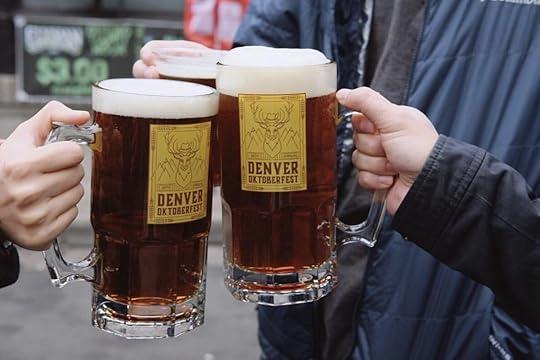
Munich has hosted the world’s best-known Oktoberfest celebration almost every year since the early 1800s. The city’s beer festival is canceled in 2021 for the 26th time, but that doesn’t mean you can’t find other Oktoberfests still going on in the United States. Despite many large-scale celebrations being canceled due to COVID-19, several cities around the US are keeping the Oktoberfest tradition alive. Nothing is set in stone at a time when gatherings are restricted due to the ongoing pandemic, but as of right now, these are the Oktoberfest celebrations around the US you can attend this year.
1. Wynwood’s Octoberfest in MiamiThe 11th-annual Wynwood’s Octoberfest will feature seasonal beers, live music, beer games like a stein-hoisting competition, a photo booth, beer hall, and some dog-friendly activities. Tickets are available online for the Samuel Adams-sponsored festival, and the official Octoberfest Party Pack includes Bavarian treats and Sam Adams-themed swag.
When: September 9 to 12
Where: Wynwood Marketplace, 2250 Northwest 2nd Avenue, Miami, FL 33127
Das Beste is not only “the best” Oktoberfest celebration in Wisconsin, it’s also a long-running historic even. Running since 1961, Das Beste features a cornhole tournament, lederhosen games, live music, parades, a medallion hunt, and a miss Oktoberfest competition. One of the celebration’s signature events is Craft Beer Night, which brings over 40 craft breweries together under one roof.
When: September 30 to October 1
Where: #1 Oktoberfest Strasse, La Crosse, Wisconsin 54601

Photo: Denver Oktoberfest/Facebook
Denver is known as the city of beer and cannabis, but for two weekends in September, weed takes a back seat. For the 51st time, the Mile High City is hosting Denver Oktoberfest, which features keg bowling, costume contests, a stein hoisting competition, a beer hall, and a weiner dog derby. Events are held at different venues throughout the city. Pre-sale general admission wristbands are $45, and include admission to live music, keg bowling, stein hoisting, a free drink, and the ability to skip the lines.
When: September 17 to 19 and 24 to 26
Where: 2100 Larimer St Denver, CO 80205
Chicago’s version of the celebration is sponsored by the German Day Association, an organization founded in 1920 to promote the continuation of German language and custom in Chicago. Needless to say, the German-American Fest is a true celebration of German heritage to this day. In addition to live music, a parade, and tents with beer and German treats, there are also performances by traditional German singing and dancing groups.
When: September 10 to 12
Where: Lincoln Square, Chicago, Illinois, 60625
Oktoberfest Zinzinnati is one of the largest in the world after Munich, with more than 575.000 people attending each year. It’s designed to be a celebration of Southwest Ohio’s rich German heritage, and features all the classic Oktoberfest food, music, and beer staples. Outside of beer, Cincinnati’s Oktoberfest is particularly known for its sauerkraut balls, potato pancakes, bratwurst, and strudel. The signature event is the Running of the Weiners, where dachshunds race for supremacy.
When: September 16 to 19
Where: 2nd and 3rd Street, Cincinnati, Ohio, 05215

The post 5 US Oktoberfest celebrations that you can still go to in 2021 appeared first on Matador Network.
These luxurious Milwaukee Airbnbs showcase Brew City’s classy side
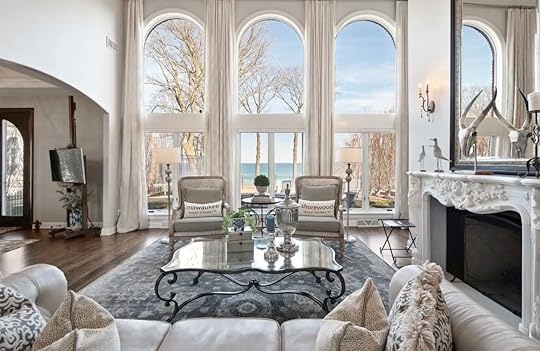
A trip to Milwaukee should center around the standard beer, brats and cheese curds. But it should also include a bit of class. Brew City is the Midwest’s classiest metropolis, and if you don’t believe me, book yourself into one of these properties. These are the best luxurious Milwaukee Airbnbs for groups, family getaways, bachelor and bachelorette parties, and work retreats.
We hope you love the spaces and stays we recommend! Just so you know, Matador may collect a small commission from the links on this page if you decide to book a stay. Listed prices are accurate as of the time of publication. See our full Advertiser Disclosure here.
Host your group at The Brewer’s Hill Inn and Gallery
Photo: Airbnb
There’s no better spot for a large group to experience Milwaukee’s beer culture than at the Brewer’s Hill Inn and Gallery. The kitchen and living spaces are designed for a reunion or bachelor party in Milwaukee, complete with foosball and arcade games. Taking a brew tour from the house is a cinch whether you organize it yourself or embark on a guided experience. But with so much on offer at the homestead, your crew will have just as much fun cracking open a case of PBR and lounging at the pad.
Sixteen guests, six bedrooms
Price: $764 per night

Photo: Airbnb
This high-end home on Brady epitomizes luxurious, Wisconsin style. There’s plenty of space to lounge and the bedrooms are each done up with high thread-count sheets, spacious beds, and views out over the surrounding neighborhood. But the real star here is the backyard and deck. It’s built for group hangs, with ample seating and bistro lighting to set the mood. Play drinking games and let the conversation flow before heading out to experience Milwaukee’s nightlife and dining scenes, each within a quick Uber ride from the house.
Six guests, three bedrooms
Price: $1,900 per night

Photo: Airbnb
Simply put, this luxurious home in Mequon is the best Airbnb for a family vacation or bachelorette party in Milwaukee. It’s located on a secluded wooded lot and manages to capture the serenity of rural Wisconsin while being just minutes from downtown Milwaukee, should you wish to go out to explore. And if you visit in winter, its white facade blends so well with the surrounding snow that the outdoor lighting gives the home a calming air. Reserve this house for a holiday getaway and your kids will remember it so fondly that the trip will quickly become the stuff of family vacation legend.
Twelve guests, six bedrooms
Price: $990 per night

Photo: Airbnb
This East Side abode puts you within walking distance of Milwaukee’s trendiest bar and restaurant district. Downtown, sporting events, and brewery tours are also nearby so there’s no need to have a car for your stay — though the home has a garage should you be driving in. The backyard is fenced in and it’s a nice place to hang out for and pregame, with a grill and lounge seating. Inside, your crew can spread out upstairs and in the basement. It’s well-appointed and clean, with all the trimmings of home for a luxurious stay in Brew City.
Eight guests, three bedrooms
Price: $595 per night

Photo: Airbnb
This is the house for when your crew is looking to go all out. Just outside Shorewood, looking over the tranquil waters of Lake Michigan, The Bluff House is a stunning rental. From the house, you can walk to Bradford and Atwater Beaches as well as Lake Park. But the home itself is quite a treat — with a master fireplace, quartz countertops, and a basement game room ready for bachelor or bachelorette parties as well as family gatherings. There’s also an outdoor entertaining area for summer and fall gatherings out by the water.
Fourteen guests, five bedrooms
Price: $3,300 per night

Photo: Airbnb
In Downer Woods just west of the coast, this north luxurious Mikwaukee Airbnb is walking distance to Atwater Beach and Lake Park, at a much more affordable rate than the above listing. It’s also close to the Calatrava-Milwaukee Art Museum and UVM, with easy access to bike paths as well as beer gardens. There’s a nice backyard and large detached garage, with a well-done living room. This is the spot for small groups or two couples looking to get away and experience Milwaukee with style.
Four guests, two bedrooms
Price: $231 per night

Photo: Airbnb
Experience the life of HGTV hosts in this luxurious Milwaukee Airbnb home within walking distance of the nightlife, dining, and brew pubs of Arbor View and Walker Square. The classic home is done to the standards of pro architects and interior designers, complete with a clawfoot tub and spacious bedrooms with comfortable, large beds. The backyard is a central gathering space complete with eight-person dining table, grilling area, bistro lighting, and plenty of space to hang out. An excellent option for families, groups, and work retreats.
Eight guests, three bedrooms
Price: $543 per night

Photo: Airbnb
This high-end loft was put together by an interior designer and it shows — the decor, the flora, the layout, everything is done perfectly and to a point that you’ve never felt so welcome anywhere outside your hometown. Walk to the Third Ward, as well as the cafes and bars of Walker Point and the rest of central MKE. There’s also a large patio on which to plot your adventures across the city, making this a great stay for a small crew or a pair of couples.
Five guests, two bedrooms
Price: $273 per night
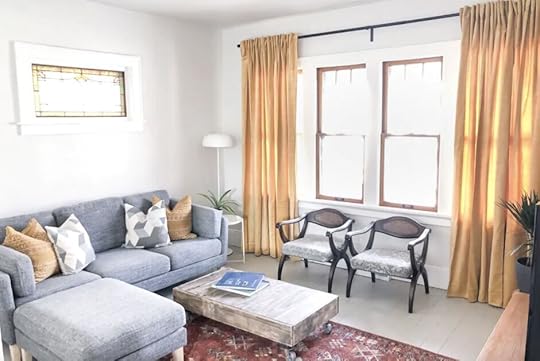
Photo: Airbnb
Milwaukee has the style and pizazz of San Francisco, Miami, and New York. This Bayview home is proof — bright and airy, comfortable, and endlessly luxurious, you’re likely to spend as much time here as you will walking over to explore the 3rd Ward, Festival Park, and the rest of Brew City’s heart. The interior thrives off natural light, with views of the bay and the ferry over to Muskegon. If this is your first time in the city or you’re here for the purpose of exploring with someone for whom it is, there’s no better Milwaukee Airbnb to raise a toast to your good taste.
Six guests, two bedrooms
Price: $256 per night
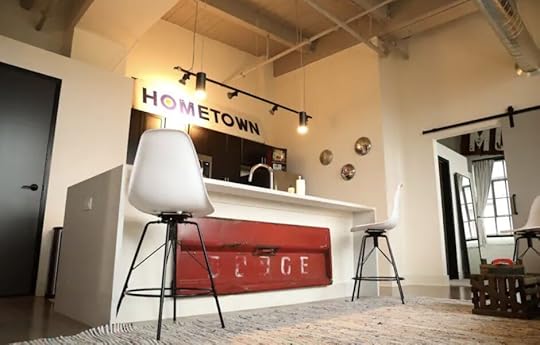
Photo: Airbnb
The best Milwaukee Airbnbs, like those everywhere, represent the style of their owner. They also tend to come with an acoustic guitar — coincidence? We think not. This trendy loft offers the guitar and a rooftop deck on which to jam, just across the river from the historic Third Ward and with views stretching from Menominee Valley to the west all the way out to the bay. The apartment is clean, functional, and comfortable, and offers easy access to beer, trendy dining, and cheese curds.
Six guests, two bedrooms
Price: $233 per night

Photo: Airbnb
If live music or nightlife is part of your Milwaukee plans, this luxurious loft with rooftop patio is the place to be. The unit is bright and well-heeled, and the rooftop patio puts it over the top. And it’s all right in the heart of Walker’s Point, Milwaukee’s coolest neighborhood. You’ll pregame with the best view in town before heading out from the unit to Restaurant Row, breweries, clubs, and more. 
Six guests, two bedrooms
Price: $235 per night
The post These luxurious Milwaukee Airbnbs showcase Brew City’s classy side appeared first on Matador Network.
Norway announces creation of 10 new national parks

As preserving nature is important in the fight against climate change, Norway is taking it to the next level by creating 10 new national parks. The country is to create four new parklands, upgrade six landscape conservation areas to national parks, and expand eight national parks that are already designated.
“Loss of biodiversity due to development and intervention is one of the biggest challenges in the world, but also in Norway, this bit-by-bit development is taking on more and more nature. Therefore, the government now wants to initiate more protection processes where both the local municipalities and the Norwegian Environment Agency recommend that a national park be built,” said Minister of Climate and the Environment of Norway Sveinung Rotevatn in a press release.
The four new national parks will be Hornelen in Bremanger, Masfjordfjella in Masfjorden and Alver, Øystesefjella in Kvam, Samnanger and Vaksdal, and the Sunnmøre Alps in Ørsta. These locals will join several national parks and UNESCO World Heritage Sites already located throughout the country.
The expanded national parks will include Rohkunborri, Blåfjella-Skjækerfjella, Skarvan-Roltdalen, Femundsmarka, Dovre, Jostedalsbreen, Jotunheimen, and Raet. Jotunheimen National Park, already well known by international visitors contains the tallest mountains in Norway, as well as Northern Europe’s highest peaks — the Jotunheimen mountain range.
“The national park status is the foremost quality mark we can give a piece of Norwegian nature. That an area becomes a national park means that [it] has very special natural values that we believe it is especially important that Norway protects and takes care of for the future,” said Rotevatn. 
The post Norway announces creation of 10 new national parks appeared first on Matador Network.
September 7, 2021
These 10 states have the most fatal wild animal attacks in the country

While we can admire the beauty of animals that nature has to offer from a distance, it’s important to remember that those same wild animals can be as dangerous as they are mesmerizing. Animals kill more than 400 people in the US each year. Some states are more prone to animal attacks than others, especially ones with large human populations or levels of tourism that encroach on public lands where certain types of animals live. The outdoors site Outforia looked at public animal attacks data logged on Wikipedia over the last 50 years to find which places see the most deadly animal attacks — and which animals have historically done the attacking.
In 20 years, Delaware, North Dakota, and Rhode Island haven’t had a single death from an animal attack (keep in mind Delaware and Rhode Island are also the smallest and least populated states in the US, while North Dakota is the fourth least populous state). Comparatively, 520 deaths from animal attacks happened in Texas over the same 20 years, which is an average of 26 deaths per year. California has the next highest with 299 deaths, and Florida was third with 247 deaths.
The data set Outforia used has natural limitations. For one, it uses Wikipedia. Jack Berryman of Utah State University conducted a study in 2019 of people who were injured or killed each year by wildlife. He found that 47,000 people south medical attention after being attacked or bitten by wildlife each year, and about eight people died each year. Taking into account wildlife collisions with cars and aircraft, as well as zoonotic disease in the pre-COVID study, about 174,000 people were injured or sickened by wildlife each year, and about 700 were killed. With Outforia’s data limitation in mind, the informal study is still an interesting look at where wildlife and humans have deadly interactions.
These are the top 10 most deadly states for animal attacks from 1999 to 2019:
Texas: 520 deathsCalifornia: 299 deathsFlorida: 247 deathsNorth Carolina: 180 deathsTennessee: 170 deathsGeorgia: 161 deathsOhio: 161 deathsPennsylvania: 148 deathsMichigan: 138 deathsNew York: 124 deathsOutforia’s study also found the top predators since 1970. Brown bears, which are found throughout the northern US, are responsible for 70 deaths. Sharks follow the bears, killing 57 people in the US. Even though these statistics may make some want to stay out of nature, attacks are still far and few between when you consider the number of people who’ve been enjoying the outdoors all these years. Shark attacks, for example, are extremely rare, and there are plenty of ways to keep you and your loved ones safe while enjoying the ocean. Tied for second place is deadly snakes like the rattlesnakes, copperheads, and cottonmouths, which are particularly prevalent across the southern portion of the US.
These are the most dangerous animals in the US by the number of deaths since 1970:
Brown Bears: 70 deathsSharks: 57 deaths Snakes: 57 deathsBlack Bears: 54 deathsAlligators: 33 deathsCougars: 16 deathsPolar bears: 10 deathsWolves: 2 deathsBe sure to be aware of your surroundings and admire from a distance. 
The post These 10 states have the most fatal wild animal attacks in the country appeared first on Matador Network.
Watch: This immersive museum experience is the world’s first virtual walk-through of Machu Picchu

If a trip to Peru is not in the cards this year, don’t fret. There’s still a way for you to see the beauty and treasures of Machu Picchu up close.
This fall, the Boca Raton Museum of Art, located in Florida, will host the first virtual walk-through of Machu Picchu.
Thanks to a full-motion 360-degree all-round interactive Virtual Reality (VR) experience, visitors to the Boca raton Museum of Art will be taken on a journey to the UNESCO-listed Inca citadel.
According to a press release, visitors to the Machu Picchu and the Golden Empires of Peru exhibition will sit in “VR motion chairs fully equipped with premium multi-sensory stimulation features such as high-resolution six degrees of freedom (6-DOF) VR headsets, haptic feedback on the backseats, scent dispensers and unlimited 360-degree rotation.”
Visitors’ senses will be stimulated so they will see, hear, feel, and smell exactly what it’s like to be walking among the ruins of the ancient Inca city of Machu Picchu.
The the first virtual walk-through of Machu Picchu is possible thanks to images and sounds captured by state-of-the-art drones. The Peruvian government authorized Cityneon, a global entertainment company, to film in and above the UNESCO World Heritage site.
Besides the virtual walk-through of Machu Picchu, guests will also get to admire the largest Andean gold collection ever to travel the world. There will be 192 priceless artifacts from royal tombs, including a fully intact gold attire of a Chimú Emperor that dates to 1300 AD.
The first virtual walk-through of Machu Picchu will premiere at the Boca Raton Museum of Art on October 16 and end on Mach 6, 2022. Tickets start at $24.95. Purchased your timed ticket on their website. 
The post Watch: This immersive museum experience is the world’s first virtual walk-through of Machu Picchu appeared first on Matador Network.
Photos: The world’s longest treetop walkway is Switzerland’s coolest new attraction

Switzerland is now home to the world’s longest treetop walkway.
Senda dil Dragun, located in the small town of Laax in Switzerland, opened on July 11, 2021, and it is the longest treetop walkway in the world. It stretches for nearly one mile through the forest and connects two Swiss villages: Laax Murschetg and Laax Dorf.

Photo: Philipp Ruggli/ Flims Laax
Visitors can enter the walkway from one of the two access towers and take a walk above the forest floor, at eye level with the tree canopy.

Photo: Philipp Ruggli/ Flims Laax
Tower Murschetg, one of the two entry towers, is 240-foot tall and features a spiral slide for kids to enjoy.

Photo: Philipp Ruggli/ Flims Laax
There are four platforms along the the world’s longest treetop walkway where you can stop and learn more about the Laax forest:
Uaul Casti Platform: Here visitors will be shown what trees and plants are in Laax forest.Ravanasc Platform: Visitors will learn all about the birds and other animals of Laax forest.Dimplaun Sura Platform: Visitors will learn more about the people that inhabited this area in the Bronze Age.Uaul Fraissen Platform: This platform will offer perfect views of the forest and the animals.The walkway is open all year long, and the website promises that it will be a “winter wonderful” during the festive season.

Photo: Philipp Ruggli/ Flims Laax
A one-way ticket for an adult to visit the world’s longest walkaway costs around $18 while a day pass will set you back around $24. For more information on Senda Dil Dragun, visit their website. 
The post Photos: The world’s longest treetop walkway is Switzerland’s coolest new attraction appeared first on Matador Network.
Matador Network's Blog
- Matador Network's profile
- 6 followers



